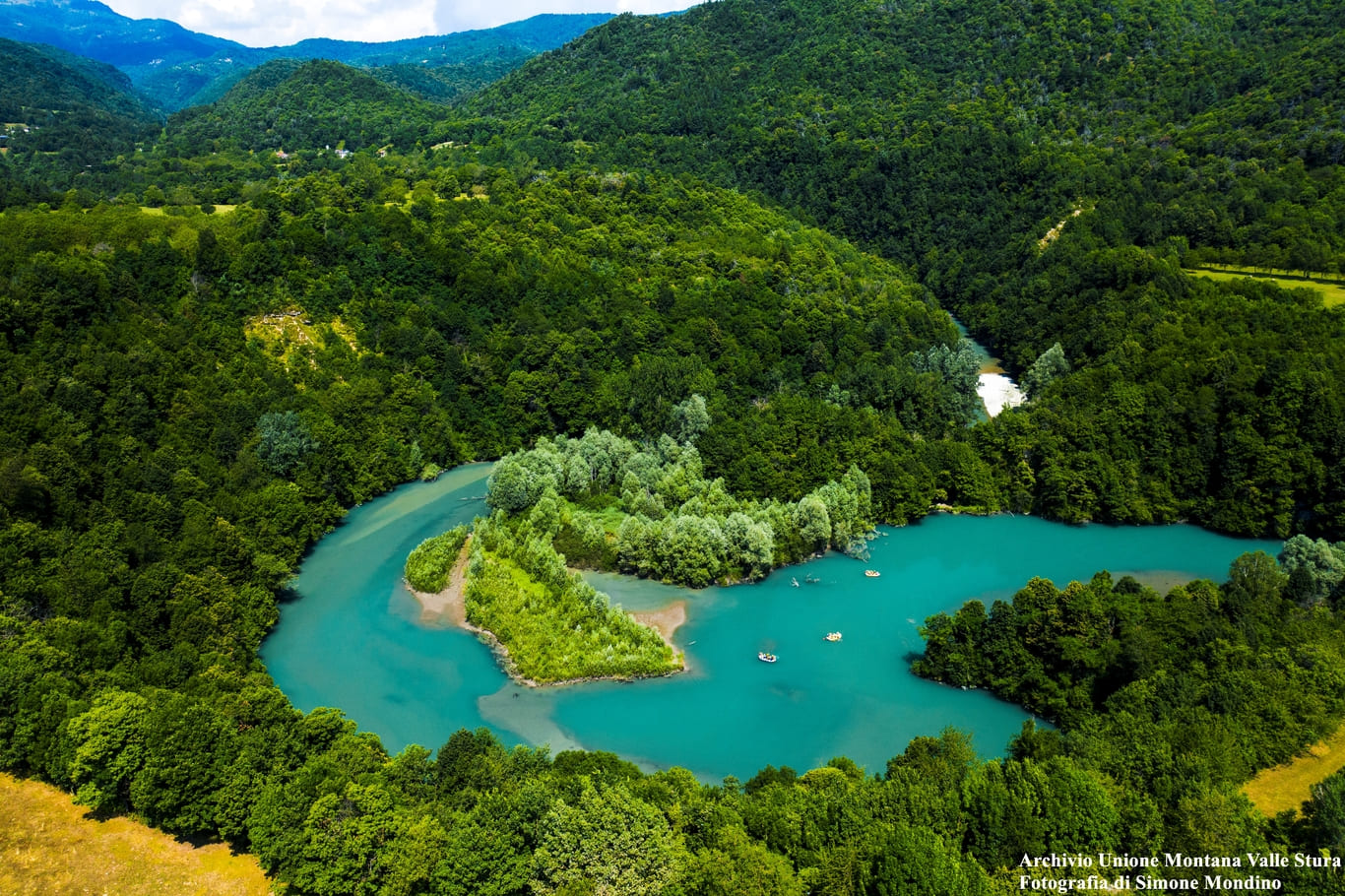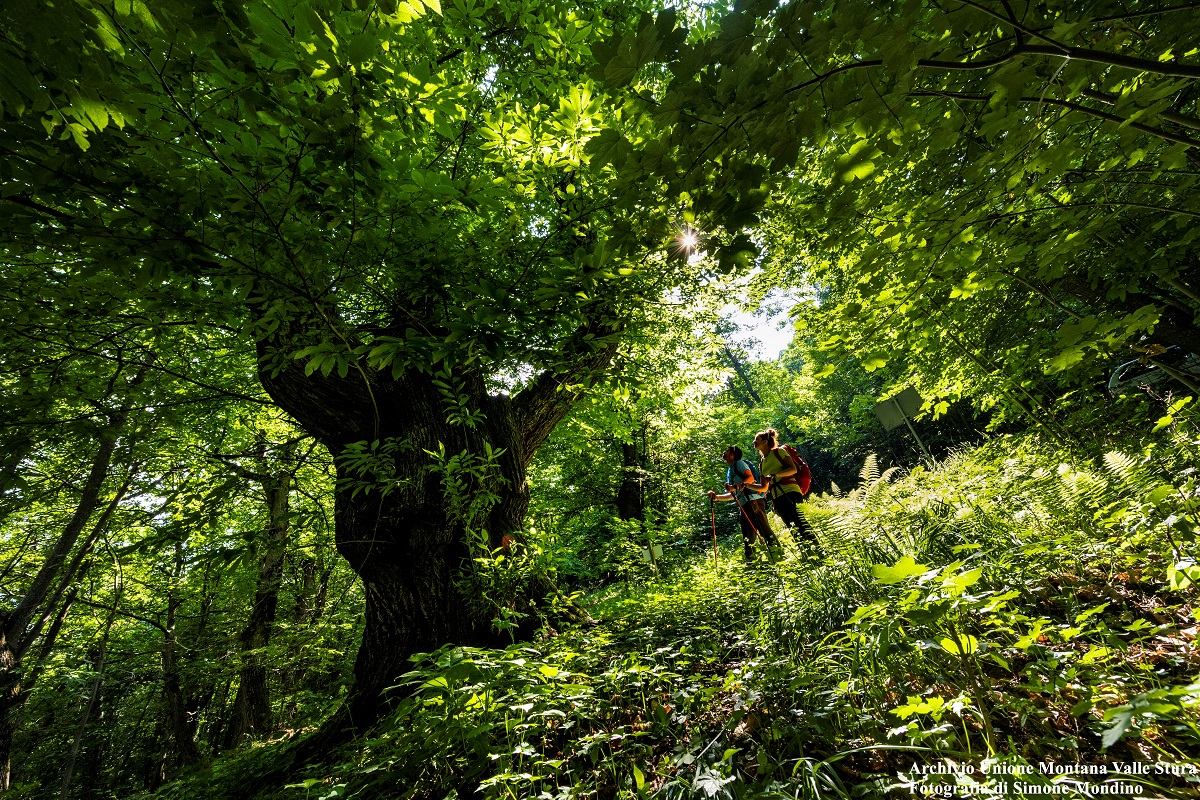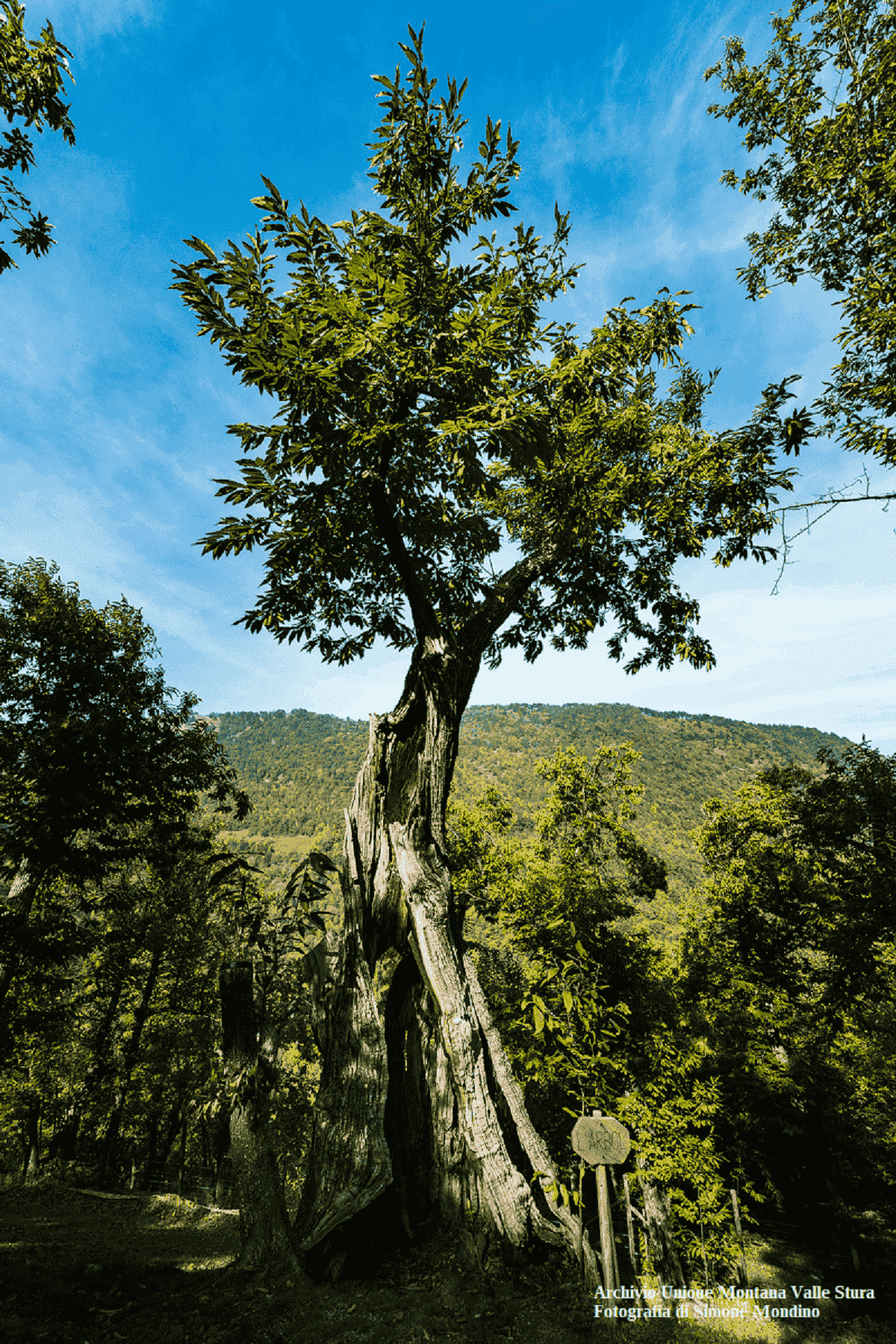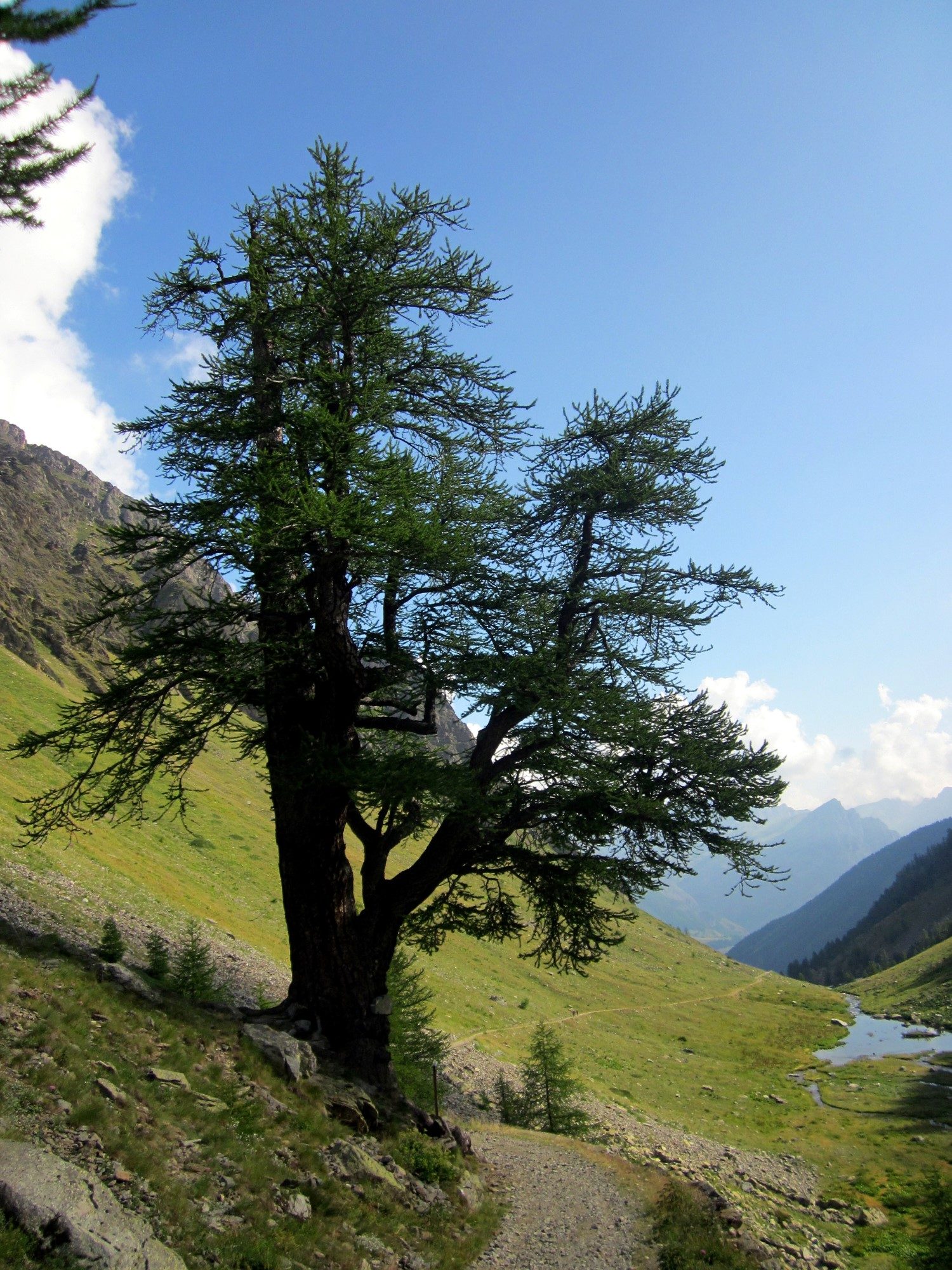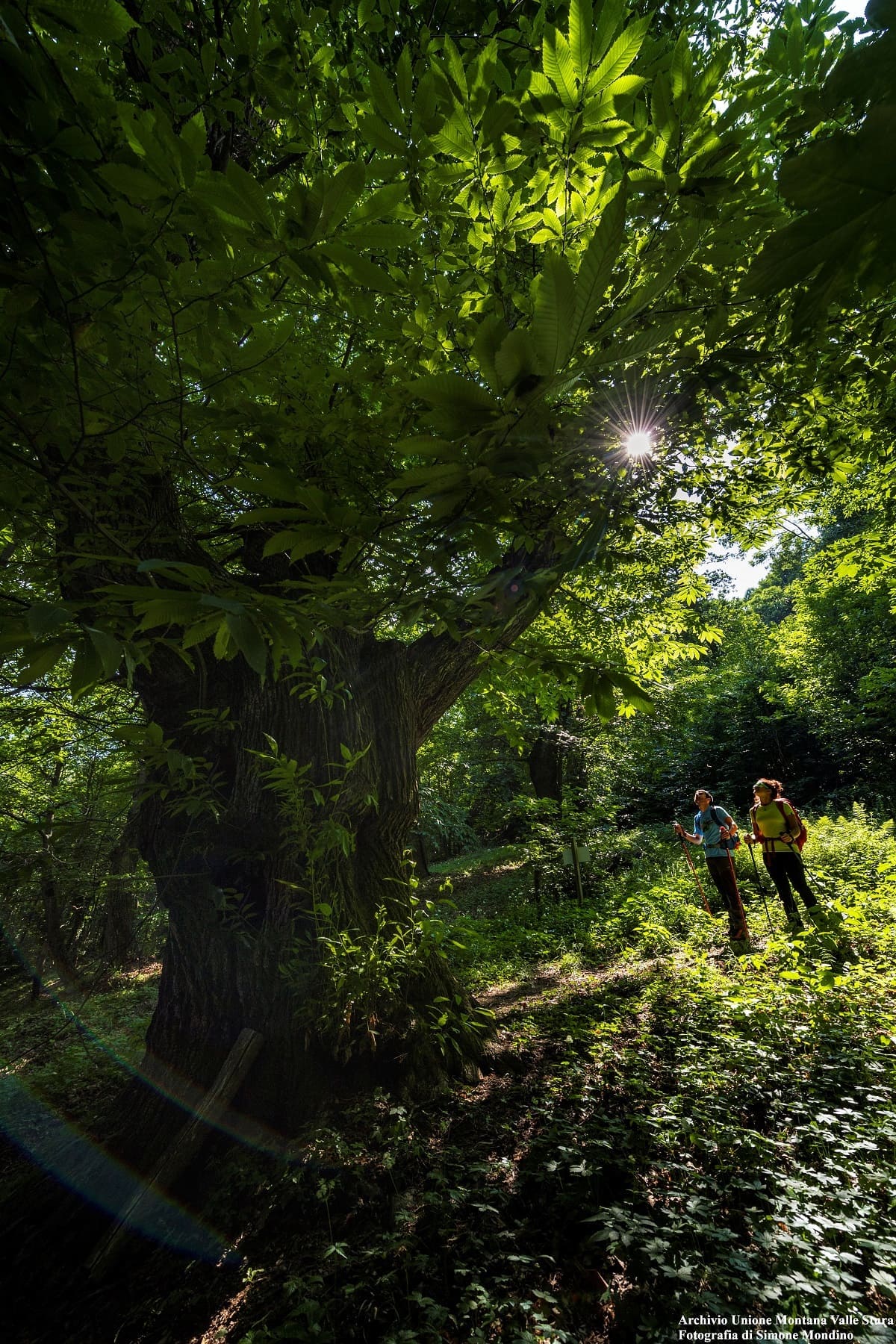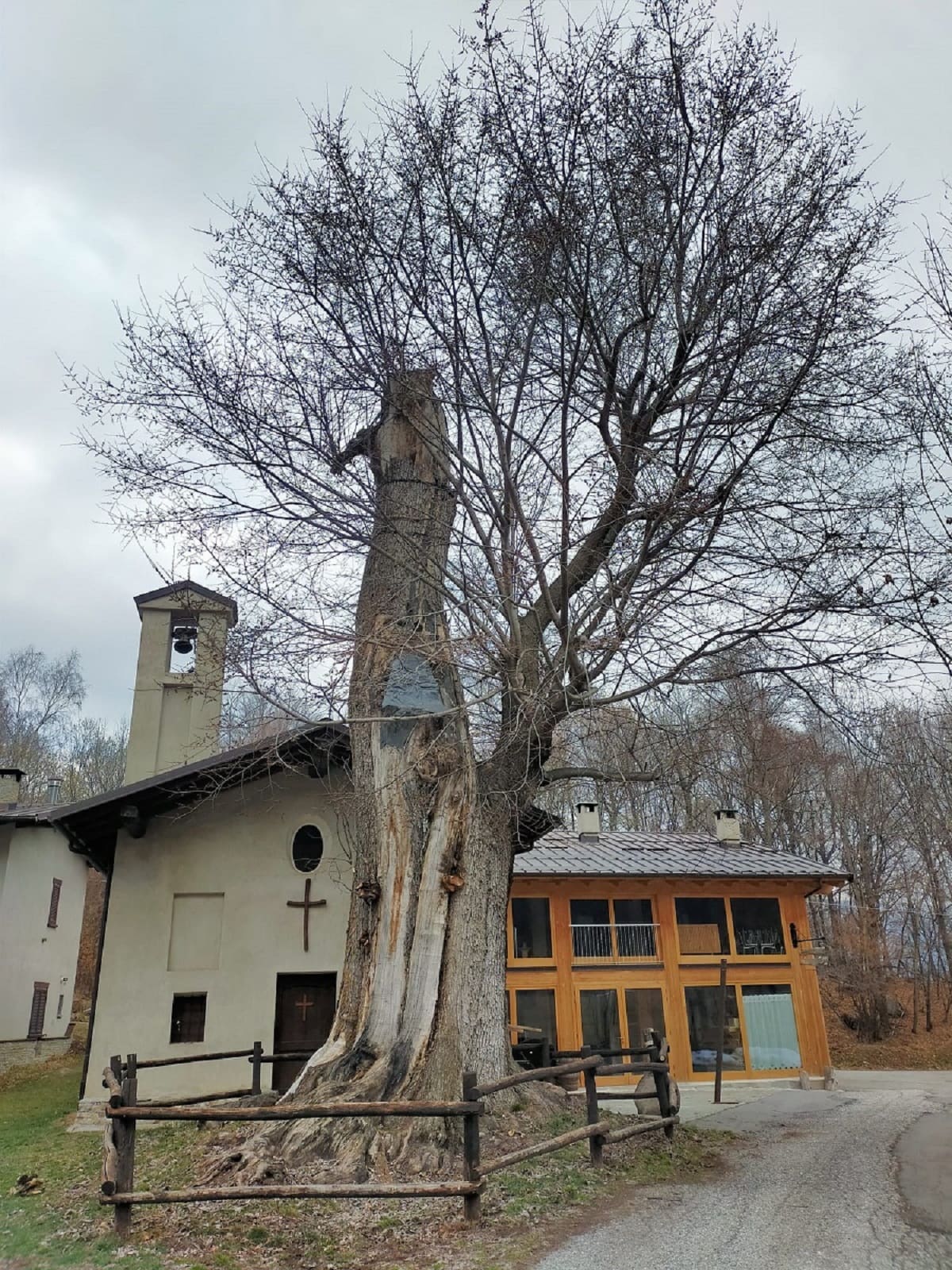Discovering our “roots”
Monumental trees are silent witnesses to the succession of a thousand and more seasons and, with them, to the evolution of socio-economic conditions, traditions, wars and the most salient events that have marked the history of our people in past centuries. They are living presences, treasures of popular memory, which by their beauty and majesty embellish landscapes and make parks and mansions, places of worship, rural settings and population centers particularly evocative.
One of these is the centuries-old Chestnut Tree of Valloriate, locally known as “Arbou ‘d la Moutta,” “Tree of the Moutta,” a name derived from the location where it stands, near Borgata Chiotti and a few meters away from the Chapel of St. Anna. It is an imposing specimen that for more than five hundred years, with a circumference at the base of about 750 cm and a height of 21 m, has offered cool summer refreshment and juicy chestnuts in the fall.
Another chestnut tree has stood in the valley for centuries, that of Moiola, which during World War II gave shelter in its hollow trunk to partisans who fought the Nazi-fascists in these valleys. A short video account of these events can be found on youtube, at the following link: https://www.youtube.com/watch?v=DYE-znpoPYE .
Another extraordinary specimen is the Pietraporzio Larch, known as “Merze Gros” or “Merze de Crussi,” which boasts an age of about 650 years, growing at an altitude of 1,980 m in the Piz Valley. It has a trunk circumference of 660 cm, a height of 23 m and is considered the longest-lived tree in Piedmont. To admire the majesty, you need to walk along an easy dirt road that will take you to this majestic specimen after about an hour and a half.
Finally, the White Elm of Demonte (with a circumference of 625 cm), which is located in the locality of Bergemolo, a very small hamlet located on the shady side of the valley in the municipality of Demonte. The elm tree grows in the churchyard of St. Michael’s Church, right in front of the hut named after the tree. It is believed to have been planted in 1620, the year the adjacent chapel was also built.
Monumental trees in the Stura Valley are a sight to behold.


